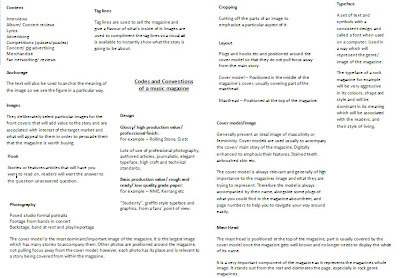Throughout the production of my music magazine pages, I have learnt about the technological processes required to succeed. For example, I now have a broad understanding of the Adobe Photoshop which I used to manipulate images taken from my photo shoot into an appropriate format/ style for use on my front page, contents and double page spread (DPS). And InDesign which I used to help layout and position all the different sections created in Photoshop into a manageable, viewable arrangement.
I was also able to match conventional criteria specific to my chosen genre. With the aid of this software I was able to more accurately target my particular audience through setting appropriate colours, shapes and any additional images needed.
Another example where I used modern technologies in the production of my magazine pages was the photo shoot which I set up to get images for my front cover, contents and DPS pages. I was able to get such good quality photos due to the professional lighting equipment, SLR cameras and backdrop provided. Not only did this allow for such brilliant photos as an end result, but also
reduced the amount of editing and manipulation needed by the above mentioned programmes to get the photographs in a usable form for my magazine.
Through constructing my magazine pages I learnt that due to the advances in modern technology, we have so many high production value products widely available to anyone, anywhere. And that a lot of effort and different teams working on one product make this possible.



Image A : In this image you can see the backdrop and profesional equipment used to ensure a good quality image as an end result.
Image B : This is a print screen of my preliminary front cover in Adobe InDesign. One of the many sophisticated programmes I was introduced to throughout this project.
Image C : This is a print screen of my final Front Cover in Photoshop, another technology I used to create my music magazine pages.









